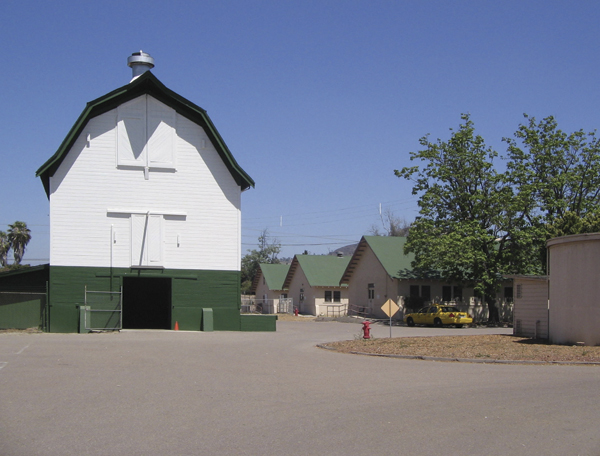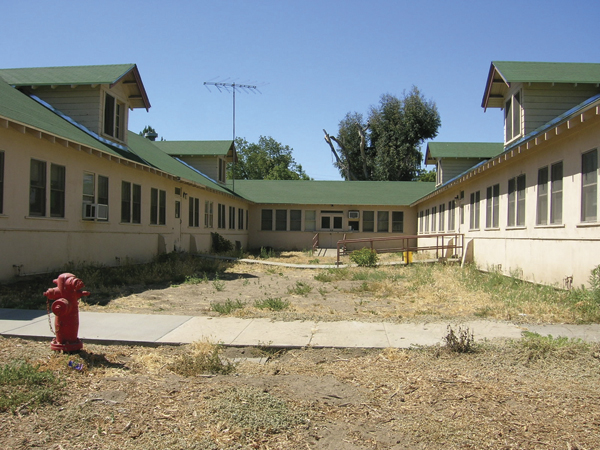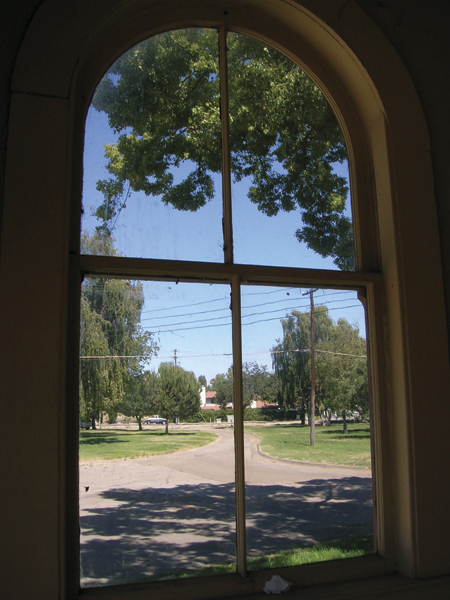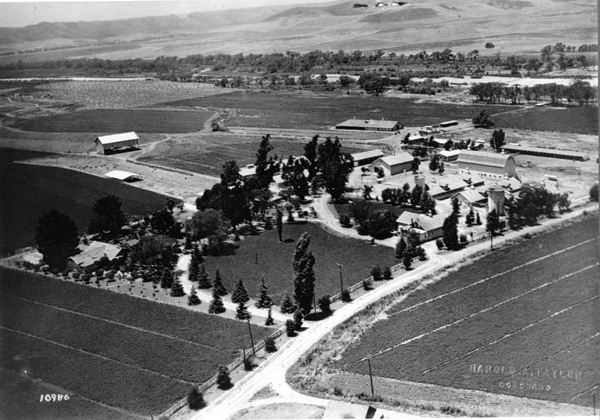|
Edgemoor
The Historical Heart of Santee Under Attack
By Ambrosia O'Neil
At least from the outside, it is easy to see why Santee faces a major identity crisis. Venturing off the freeway into the limits of the small city - incorporated since 1980, the current Santee experience offers faceless older rundown strip development on the one hand, and faceless new big box commercial chain development on the other. An identifiable historic building is scant to be seen. At the turn of the twentieth century, however, the area was a thriving ranching community and a pastoral backcountry retreat for some of the wealthiest families in America.
What happened to all that rural charm? It can still be found in one special place. Located on land owned by the County of San Diego within the City of Santee, and adjacent to the existing Los Colinas facility, the Edgemoor Hospital site has been the on-and-off target of much controversy for well over fifty years. Tucked back at a distance from Magnolia Avenue, the unassuming collection of buildings surrounded by trees has a surprisingly unique and diverse history that has been almost completely forgotten. Shockingly and sadly, despite the current debate over plans to demolish Edgemoor to build a new women's prison within Santee's residential and commercial core, its role in the historical development of the community continues to be critically overlooked.

The National Register-listed Edgemoor Polo Barn, constructed sometime shortly after 1913, sits adjacent to three large dairy barns of the same era. The Dairy Barns were converted into hospital wards in the 1940s.
|

The Dairy Barns, though modified, retain much of their earlier twentieth century agricultural character.
|

The original 1923 Dining & Recreation Hall looks out at Edgemoor's peaceful and lush front yard.
|

The Edgemoor Polo Pony and Dairy Ranch, ca.1915. Photograph courtesy Santee Historical Society
|
More than twenty years ago, the Edgemoor Farm and Home for the Aged and Indigent Historic District was placed on the California Register of Historical Resources and determined eligible for National Register-listing by the State Office of Historic Preservation. The historic designation included an approximately 300 acre parcel of former ranchland that has since been developed extensively (possibly without the proper historical review as required under CEQA, the California Environmental Quality Act).
In addition to the Historic District, Edgemoor also contains an individually-listed National Register landmark, the distinctive Edgemoor Polo Barn. A unique gambrel-roofed architectural specimen in its own right, the Polo Barn symbolizes the achievements of Walter Hamlin Dupee. Dupee purchased Edgemoor Farm in 1913 and built it into a national award-winning dairy farm, polo pony ranch and early tourist attraction. Dupee, a millionaire transplant from Chicago, was captain of the Coronado Polo Team and is credited for being instrumental in the spread of "the sport of kings" throughout much of the colonized world. He built the Polo Barn to house his prize ponies and imported Guernsey bulls, and erected many other farm-related structures including the three converted Dairy Barns prominent along Magnolia Avenue. In the early twentieth century, Dupee put Santee on the map by setting the standards for dairy production in Southern California and by selling his quality products to high end customers such as the Hotel Del Coronado.
Following Edgemoor's glory days as a commercial dairy, the County of San Diego purchased the property for use as a "last resort" home for the aged and indigent in 1923. It was one of the last poor farms (or farm homes) established in the United States prior to the Great Depression and the introduction of Social Security. Over the next six years, the noted San Diego architecture firm, the Quayle Brothers, was hired to design and construct several cost-efficient buildings for Edgemoor's residents and staff. The sons of master architect William Quayle, Charles and Edward Quayle had relocated to San Diego from Denver shortly after the turn-of-the-century. They produced a vast catalogue of attractive, well-constructed commercial, residential and public buildings of all styles and types throughout San Diego and beyond, and were commissioned to design many County building projects during the 1910s and 1920s. Like their father, they are regarded as important their projects, including the North Park Theatre and the Old Police Headquarters (with Architect Alberto Owen Treganza), are listed on local, state and national historic registers. Edgemoor's surviving six out of seven original Quayle Brothers' buildings form a one-of-a-kind inter-related complex that, within the context of their surviving body of works, represents a rare experiment in early Modernist design. Employing the most up-to-date concepts, methods and materials on the poor farm complex, the architects combined functional minimalist design with regional Spanish Colonial, Mission and Pueblo Revival styles. Serving the needs of the institution since the 1920s, these buildings remain in good usable condition after 80 years.
Aside from the Polo Barn, the Dairy Barns, and a couple of smaller miscellaneous buildings, most of Edgemoor's farm era structures have been demolished, and its original 500+ acres of land has been whittled down to less than 100. Regardless, more than twenty buildings associated with various periods of historical significance still stand, telling a multi-faceted story that weaves together several disparate aspects of the region's past. For Santee, which has seen almost all of its built heritage disappear, saving an important and vast historical resource such as Edgemoor represents a last chance at capturing a valuable sense of place for local residents. With a serene park-like setting, human scale, and large diverse collection of readily adaptable, well maintained historic buildings, Edgemoor has virtually unlimited potential to be a driving force of the local economy as well as a nexus for the social and cultural life of the community. Unless a major effort is mounted soon however, this irreplaceable Historic District will be tragically lost along with these precious opportunities.
All photos by Ambrosia O'Neil except where noted otherwise. Ambrosia O'Neil is a San Diego County resident who states that she believes in protecting and preserving historic resources for future generations. She has lived and worked all over the world, fighting injustice in all its infinite forms.
|
MORE FROM THIS ISSUE
From the Editor
2008 Most Endangered List of Historic Resources
Character Matters
Smart Growth - or is it?
The Impact of Historic Districts
Washington Didn't Sleep Here
How to Research Your House
Preserving Community Character
Behind the Tuscany Craze
2008 People In Preservation Award Winners
Preservation Community
Reflections
Annual Financial Report
Book Review - Working Windows
Sherlock Homes
Speakers Bureau Forming
Lost San Diego
Strength in Numbers
Advertisements
DOWNLOAD full magazine as pdf (16mb)
|







